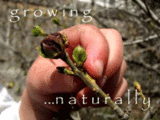
This my friends is Roman or English chamomile (Chamaemelum nobile), not to be mistaken for its taller, showier look-alike, German chamomile (Matricaria recutita). It is sometimes called "garden camomile" ground apple, low chamomile, or whig plant.
According to the University of Maryland Medical Center, they belong to different species but they are used similarly. Most research on chamomile has been done with German chamomile, which has similar, but not identical, active ingredients to its Roman cousin.
Roman chamomile originates in northwestern Europe and Northern Ireland, where it creeps close to the ground and can reach up to one foot in height.And it's related to asters, daisies, chrysanthemums, and ragweed. I is found in dry fields and around the edges of cultivated ground. It flowers in June and July.
Gray-green leaves grow from the stems, and the flowers have yellow centers surrounded by white petals, like miniature daisies. Its leaves are thicker than German chamomile, and it grows closer to the ground. The flowers smell like apples.
Chamomile tea is good for fever and restlessness, particularly in children. It relieves anxiety and soothes tummy distress. It's a good wash for open wounds because it is antibacterial, anti fungal, and anti-viral and it reduces inflammation. It can even be made into a topical rub for painful joints, callouses, and swelling.
Chamomile is rules by the sun, its element is water and is said to rule sleep, love, and purification. Wash your hands in chamomile tea to draw money to you, burn it in your incense to bring peaceful sleep or fruitful meditation, and put chamomile flowers in your bath to attract love.
Seed the perimeter of your property with chamomile to dispel ill intent and dissolve animosity. (Interesting that it has grown at the end of the driveway in every home I have ever lived in.)
Roman chamomile doesn't seed particularly well, so to propgate it, it's easiest to divide and replant it every three years or so.
My old pal chamomile -- so glad you have a name now!











My son and I were just talking about this plant! He wants to know if it makes a good "lawn substitute". Apparently one of his goals is to gradually replace our back lawn with more useful plants, which I am all for. Do you think this is a good candidate?
ReplyDeletePS I am "absoulutely" loving your herb photos and info! Have you checked out the free herbal course on Susun Weed's website? Drakon and I just started it, plus I am still doing the very expensive Green Witch one.
Hi, Gina!
ReplyDeleteI don't know if you'd like it as a lawn substitute -- chamomile is very much a flower and ti doesn't clump up the way grass and other ground covers do. But as a part of a yard-sized herb garden, I think it would be wonderful!!
So glad you're enjoying the herbal! I was wondering whether it was of interest to anyone but me. ;)
I didn't know about the free herbal course over on Susun's site - -I have to check that out!!! Thanks!
Hello. I hope that this posting will be seen, as I am responding to a 2009 post about Chamaemelum Nobile (Roman chamomile). Mine was sold as such and it looks like the photo you have above. But it never produces white petals on the yellow heads. Is it really chamomile and can I still use it for tea?
Delete